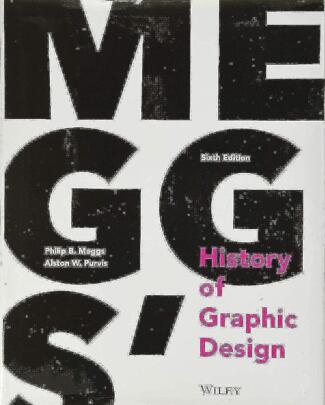The history of typography
Essay: History of typography
by Thomas Girard
*

It would be hard to discount typography without first addressing its roots in the way we live. I was first drawn to the design history reference of stone tablets being carved into with lettering, and that lettering, at the very beginning, at least according to Megg’s, being about finance – about recording the ownership of things. Because it goes back that far, you have to start in a way by saying, ‘okay, this is significant.’ The printing press is another obvious example. If you’re learning textbook graphic design you might draw reference to the Gutenberg Bible, a massively reproduced manifestation of ideas, to say the least, or the Kelmscott Press, and the intricacies of hand-drawn typographic ornamentation on books, on borders of pages, and so on. Because these were so every day, so ubiquitous at least in the realm of these particular deliverables, and so important in the transfer of language throughout time, we, in a way, must continue this belief that these are important. Again, it’s very difficult to discount typography in this realm as a passage through time.


Finally, we start to hit the digital age, and talk about people being more playful with type: people like April Greiman saying typography can exist on the computer, people like Zuzana Licko with Emigre Type Foundry, saying that these typographic cards are not set in stone, they can be played with, they can transition out of what we could call design modernism, into postmodernism, and then beyond that all the way into the small screens that we carry around. At that point, typography becomes undeniably key; a historical monument. The discussion becomes proven regardless of how you might argue for or against it.
The interpretation of typography
Where we get into debate is around how typography can be so important if we don’t talk about it that much. Perhaps that’s the area we need to work on the most, in terms of typography as dinner table conversation, in terms of the use of Helvetica being of serious everyday debate, in terms of typography being outside the realm of time, outside the realm of possibly going extinct. It cannot. It is to be always relevant. So we enter into our everyday, let’s just say, extremely consequential uses of it, which prove its point and point out its state of being underrepresented.

Where typography is going
Where we’re arriving at is that typography is more consequential than ever, regardless of if we notice it or not. So, let’s notice it. The design of an election ballot, the design of highway signage with typefaces like DIN or Clearview or some variation chosen by the engineer of the day, resulting in the life and death of people who rely on it. They rely on it for those everyday, consequential, life or death choices. The pill bottle inscribed with typography that dictates the medication you may or may not take, to decide the length of your life. The signage you notice fast enough to make that critical turn correctly on the road. These decisions are typographic.

Some examples
We all love the names of fonts in shaping our understanding of typography so let’s go there for a moment.
 Gill Sans is, I think, common enough that we might know of it, or hear of it. It was designed by Eric Gill and being a very British typographic choice. It’s most obviously noticed if you are in London or the surrounding areas and see its ubiquity, even today. And it’s strange, because Eric Gill was not in any way an ordinary person but was responsible for the design of something that became so ordinary, yet in a way shouldn’t have been because by many measures it is quite odd. Gill Sans is memorable in a way that I would argue goes against its readability, legibility, and ability to be popular in the most common form of typographic form, which is simply to be read.
Gill Sans is, I think, common enough that we might know of it, or hear of it. It was designed by Eric Gill and being a very British typographic choice. It’s most obviously noticed if you are in London or the surrounding areas and see its ubiquity, even today. And it’s strange, because Eric Gill was not in any way an ordinary person but was responsible for the design of something that became so ordinary, yet in a way shouldn’t have been because by many measures it is quite odd. Gill Sans is memorable in a way that I would argue goes against its readability, legibility, and ability to be popular in the most common form of typographic form, which is simply to be read.
Let’s return to Helvetica, which in a mainstream way, perhaps, became popular in the 1970s when its massive corporate identity application across the board made it part of almost every scene and background and physical environment. In many ways it shouldn’t have done that because although it was considered to be clean, and efficient, and approachable, it was in fact, so much so, that it was not memorable. Its implementation dictated that it needed to be memorable. As a corporate device, Helvetica was to differentiate a lot of those corporate juggernauts and serve that specific memorable purpose.
In both these cases, we are faced with very well-designed typefaces, in a way going against the norm of how they should have played out in history – subverting themselves in terms of their obviousness, and becoming so popular that they were a different kind of everyday visual language.
Where we enter

Erik Spiekermann is one choice of entry into all this – a German typeface designer, and legend in many rights, that for many people made visible this profession. For typography, or let’s say typeface design, he has been responsible for the passage of time. His type foundry is Fontshop, and has created a postmodern interpretation of Helvetica through FF Meta. His popular book Stop Stealing Sheep & Find Out How Type Works made bold statements around how letterspacing should and shouldn’t be used by graphic designers of his time and this time. His proud, bold attitude compliments his life work and prepares us to take seriously what might most often be simply overlooked: typography. His necessity in the world of typography allows us to create a framework around other pieces of visual history that we might encounter. It might be Jan Tschichold’s black, white, and red formulas or Wolfgang Weingart’s chopped in half TYPOGRAPHY book cover lettering, or something more present day like the corporate Google Fonts, and their symphonies of Monserrat and Railway. And, of course, there’s Apple’s variants. Spiekermann was a coming of age for many, and his oddity was a calling to put our eyes on this profession much more than anyone was doing.
Where we jump forward to
Perhaps this is how we arrive. Artificial Intelligence (AI) is the conversation of present day, and in that conversation we need to talk about all of these references. Maybe that’s AI’s strength: to take all of the typographic knowledge that’s been invested in and shape it and photograph it into the collages of digital space, into the technological worlds of AR and VR manifestation, regardless of if they are Meta or Apple or Amazon. The AI typographic calling can’t be downplayed, in fact it must be up-played right now, at this pioneering time, so we can remember Helvetica, not for its 2007 film, but for its typeface/historical relevance, that put everything visual on the map for all of us and continues to do that today, and will continue to do that every day, as we move forward, propelled by typographic history or otherwise…
*

Thomas Girard (born 30 December, 1980 in Vancouver) is a Canadian scholar. Girard was accepted to attend the University of Oxford in lectures equivalent to graduate coursework. Girard has received several Emerging Scholar awards, first at the Design Principles and Practices conference in Barcelona at the prestigious ELISAVA. At Emily Carr University of Art and Design he received his second Emerging Scholar award. Other awards include RBC Emerging Scholar, Royal Bank of Canada Foundation. For 2021, he has been awarded an Emerging Scholar award from the New Directions in the Humanities conference in Madrid. He is a 2022 graduate of the Graduate Liberal Studies programme at Simon Fraser University. He presented “Advanced Typography Workshops in Quarantine” at the Sorbonne in June 2023. Editor’s note: Thomas Girard has written three previous essays for The BC Review, User experience & Sophocles, Teaching typography in quarantine (also to be presented here) and Podiums, prototypes, and Plato. He has also reviewed books by Garnet Hertz and Ron Wakkary.
*
The British Columbia Review
Interim Editors, 2023-24: Trevor Marc Hughes (non-fiction), Brett Josef Grubisic (fiction)
Publisher: Richard Mackie
Formerly The Ormsby Review, The British Columbia Review is an on-line book review and journal service for BC writers and readers. The Advisory Board now consists of Jean Barman, Wade Davis, Robin Fisher, Barry Gough, Hugh Johnston, Kathy Mezei, Patricia Roy, Maria Tippett, and Graeme Wynn. Provincial Government Patron (since September 2018): Creative BC. Honorary Patron: Yosef Wosk. Scholarly Patron: SFU Graduate Liberal Studies. The British Columbia Review was founded in 2016 by Richard Mackie and Alan Twigg.
“Only connect.” – E.M. Forster
8 comments on “The history of typography”
It might be time for a retrospective review of Bringhurst’s works on typography.
I love Bringhurst and would love to amplify!
I was hoping for some mention of B.C. writer Robert Bringhurst’s The Elements of Typographic Style (1992). A great book on the topic.
More essays coming! Definitely will try for a nod to Bringhurst!
Yes, I agree with Michael Turner.